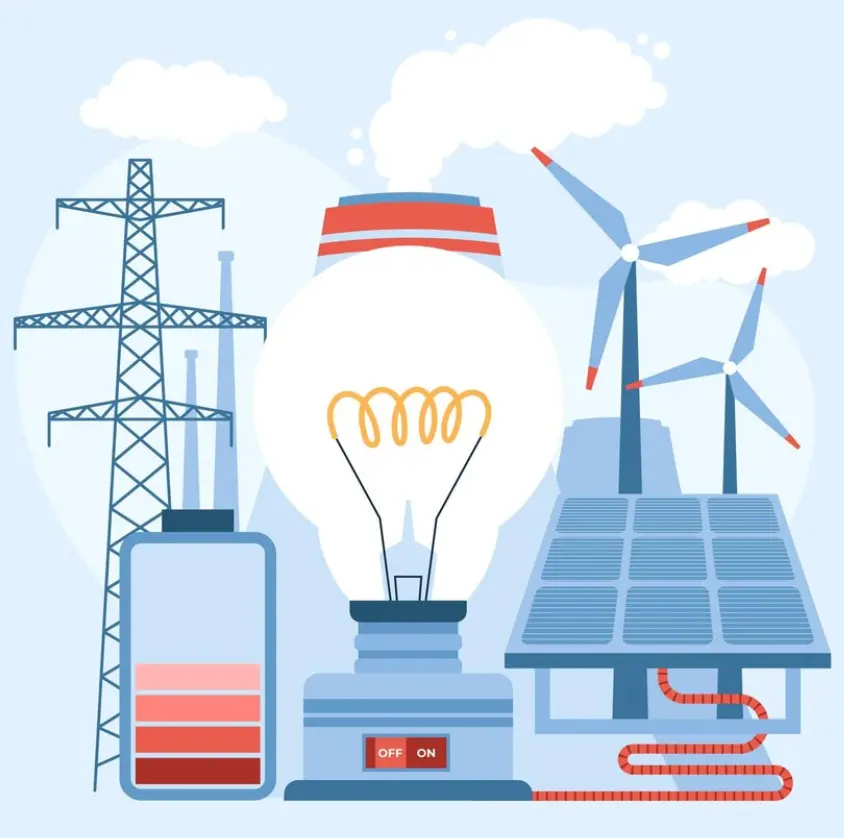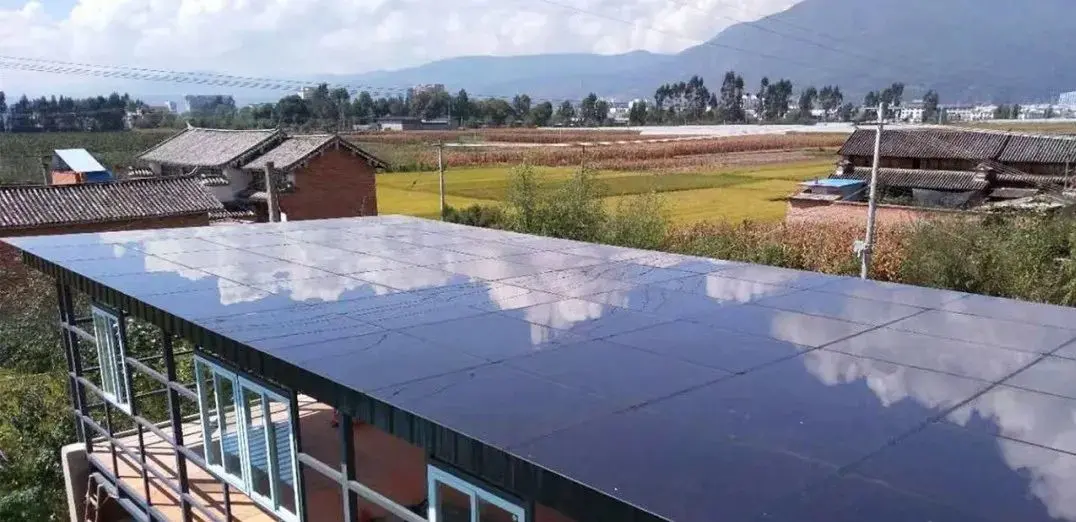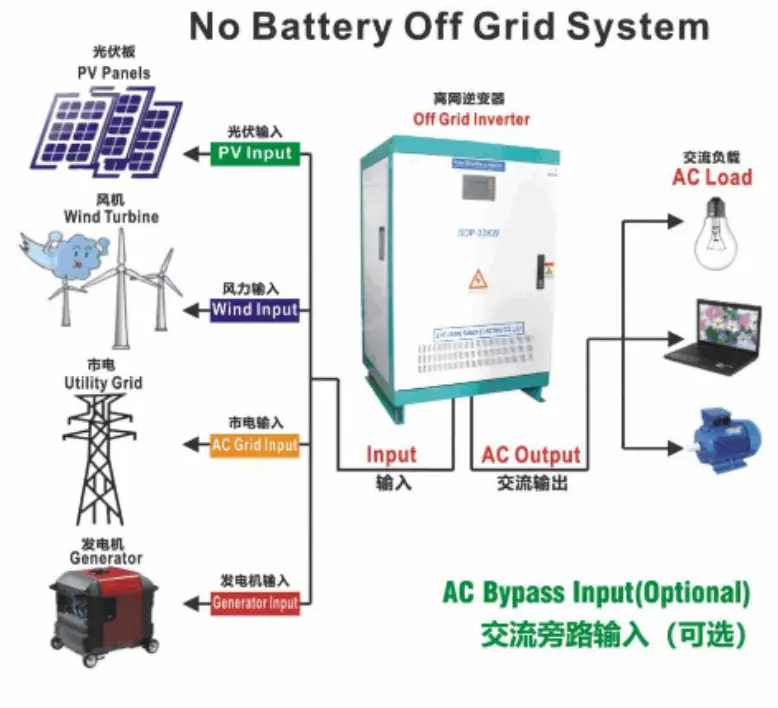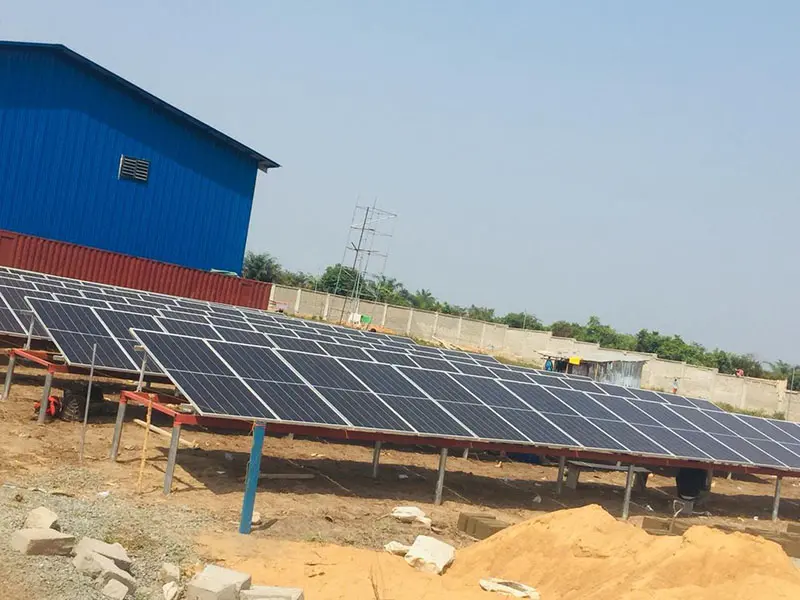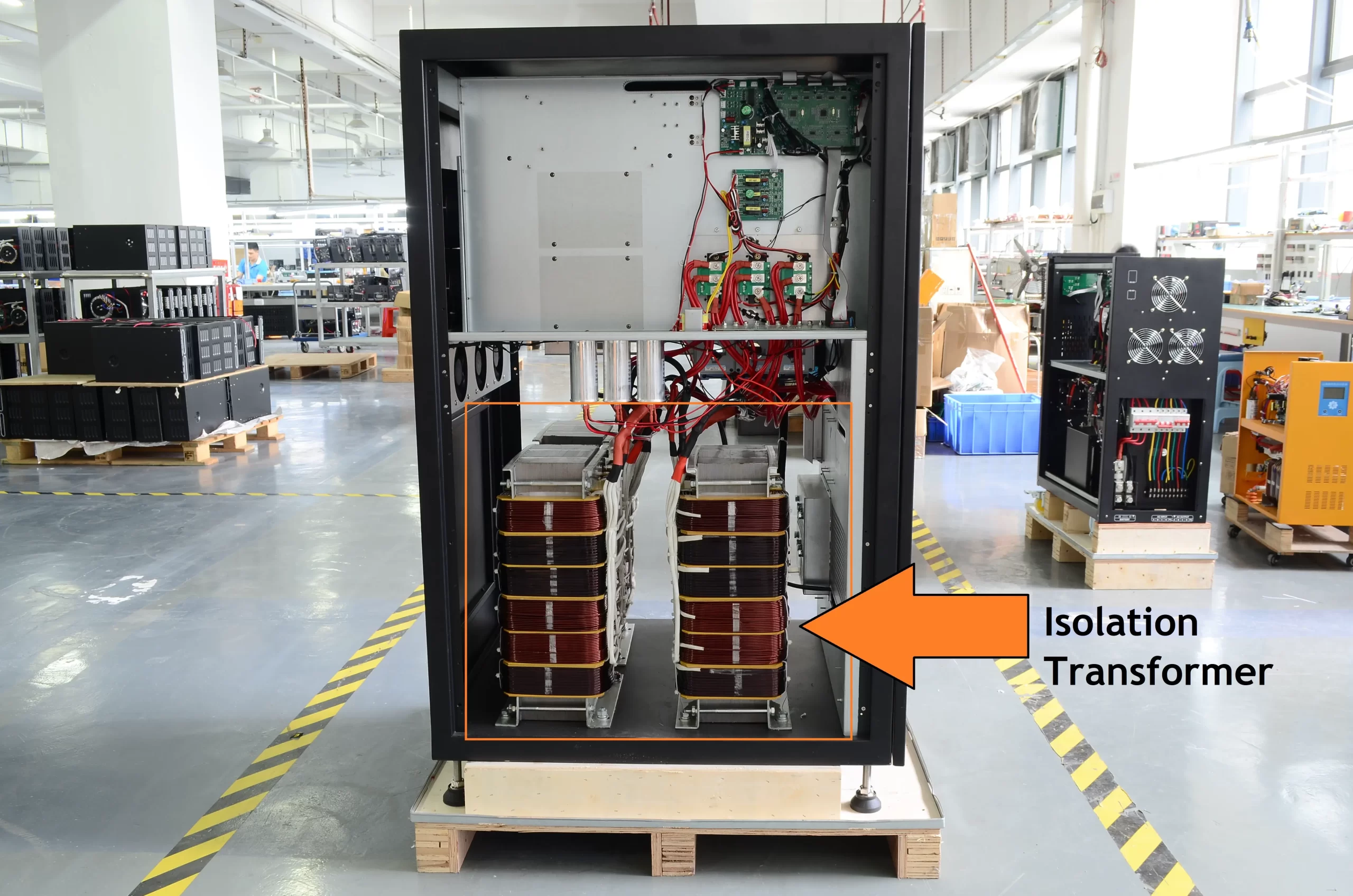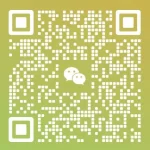Due to diurnal, seasonal, and random variations in solar radiation, the output power and energy of the solar energy systems fluctuate periodically, making it impossible for users to obtain a continuous and stable supply of electrical energy.
By adding a battery to the solar energy systems, the DC power produced by the solar panels is converted to chemical energy and stored for future use.
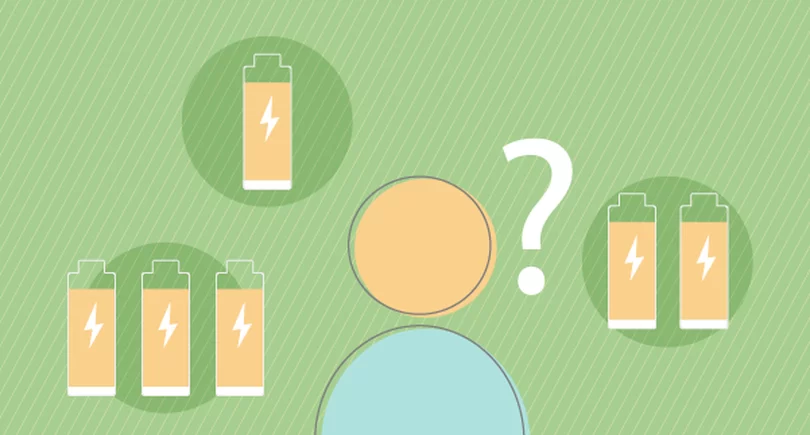
In addition, grid-connected solar energy systems and batteryless systems, which rely on a strong utility grid and advanced inverter technology, do not require batteries, and you can enjoy photovoltaic power directly.
To learn more about them, click on the orange text to read.
There are 3 possible reasons why you need batteries – regardless of solar energy systems or not:
1- To save money on your electric bill/expect batteries during peak hour discharges.
2- Enable batteries during a power outage as an emergency power source.
3- No utility grid at all, or want to get off the grid. So we need a system that generates power and stands alone.
Based on the above, what kind of batteries do we need? And how many batteries do we need?
What batteries can be used in solar energy systems?
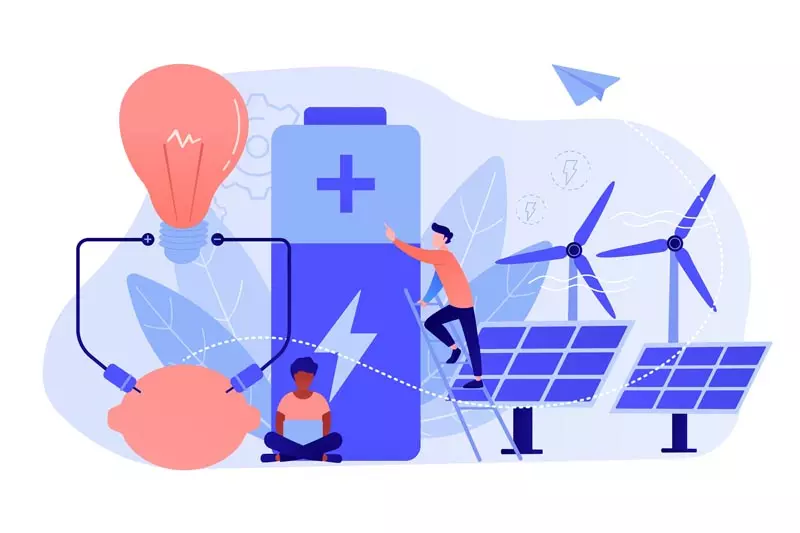
Solar energy systems have served mankind for over 25 years.
Among them, the lead-acid gel-sealed battery is more mature in terms of technology, matching, and design with solar panels.
Currently it is available in 2v, 6v and 12v. PVMars can provide 2v100ah-3000ah, 6v100ah-200ah, 12v65ah-250ah, and other gel batteries.

In addition, lithium batteries are prevalent in the market that seeks to maximize energy due to their ability to reach 100% DOD (Deep Discharge Cycle Count).
As a result, many types of Li-Ion batteries are on the market. It is worth noting that not every type of Li-Ion battery is suitable for solar energy systems.
PVMars use LFP lithium iron phosphate batteries, which are a cobalt-free cathode material, not prone to thermal runaway, and extremely safe.

Probably you have seen news reports about electric car fires, and massive recalls of batteries that pose a fire risk.
As well, the safety risks associated with ternary batteries and cobalt are now well known after a multi-million dollar lawsuit between GM and LG made headlines in ’21.
This may be one of the reasons why Tesla announced in October ’21 that it was switching to cobalt-free LFP batteries for its regular range vehicles (entry-level Tesla Model 3 and Tesla Model Y versions).
In 2022, during a Q&A session related to the Q4 2021 financial report, Tesla CEO Elon Musk stated that he expects all stationary energy storage products to transition to lithium iron phosphate battery chemistry.
Finally, LFP batteries are also landfill safe, which protects the environment and is safe and secure for use in homes, commercial and industrial environments.
Is there any reason why we shouldn’t choose it?
There is, and that’s the price. Lithium batteries generally cost more than gel batteries. The most critical thing is choosing the right battery according to our needs.
How many solar batteries do I need?
We reviewed the first section and there are 3 scenarios for calculations and designs.
1- Saving money on electricity
The calculation needs to be done alongside your electricity bill.
For example, in the picture below, 9kWh is required during peak hours, so the batteries need to be at least 9kWh to save money on your electricity bill.

The DOD of a gel battery is 75%-85%. Take 12v200AH as an example: 12×200 = 2400×0.8 = 1920wh. 9000wh / 1920wh = 4.68. At least 4 x 12v200AH gel batteries are needed.
Li-ion batteries can be designed directly for one wall-mounted Li-ion battery with a 9kWh capacity. If you have limited installation space and a reasonable budget, consider wall-mounted lithium batteries.
2-Emergency power supply is needed in case of a power outage
Here we need to take into account the time of the blackout, and the power of the equipment that needs power.
For example, a typical power outage lasts 3 hours. Frequently used appliances are an air conditioner 1000w x 1, refrigerator 500w x 1, computer 200w x 1, electric light 20w x 3, etc.

Please note that air conditioners, refrigerators, and pumps are inductive loads. The instantaneous starting power of these appliances is 3-10 times the rated power.
If its frequency conversion type application can be calculated as about 1.5 times.
Therefore, regardless of whether you have a UPS or a solar system, it is imperative to design the system power higher than the appliance’s rated power.
Avoid overloading, which causes electrical appliance failure. For more information, click on the orange font.
Let’s return to the battery calculation.
1000w + 500w + 200w + 60w = 1760w x 3 hours = 5280wh / 1920wh = 2.75.
At least 2 x 12v200AH gel batteries are required. The same can be designed for one 5.28kWh lithium battery.
3 - No utility grid resources / off-grid (self-sufficient)
Similar to part 2, you will also need to know the appliance’s power, the time to prepare the power, and other requirements.
The difference is that you will need complete off-grid solar energy systems.
Let’s take an example of home use. A 10kW solar energy system is a popular choice.
It is designed with 18 x 580w solar panels, 16 x 12v200AH gel batteries, or 2 x 10kWh lithium batteries.
20kWh / 5000w = 4 hours, equivalent to you can use 5kW power appliances to your heart’s content in 4 hours without solar or mains power. What appliances are in the 5kW range? You can refer to the picture below.
What are the benefits of solar batteries?
Battery is a solar system energy storage device, which improves the system power supply quality.
① Residual energy storage and standby:
Storage of PV energy beyond the load demand and energy output when PV is weak.
The battery will keep the excess electricity issued by the system when there is sufficient sunshine for use at night or on cloudy and rainy days with no wind.
Solve the problem of inconsistency between power generation and power consumption over time.
② Ensure stable power output of the system:
Eliminate PV input power volatility and the difference in load demand.
Power equipment working hours and power sizes have their own rules of change.
It is impossible to make solar energy and power loads naturally cooperate.
Battery storage space and good charging and discharging performance, for photovoltaic power generation system power and energy regulation provide favorable conditions.
③Improve power quality and reliability:
Provide instantaneous energy during voltage fluctuation, flicker, and drop.
There are often productive loads in a photovoltaic village system.
These loads have large capacity but also generate surge current and inrush current during startup and operation, such as water pumps, lawnmowers, and chillers.
The low internal resistance and superior surface characteristics of batteries can be adapted to the power supply requirements of these inductive loads.
Final Thoughts - Suggestions for More Economical Configurations
A professional solar energy systems manufacturer will design a solar system that matches your actual needs.
It is necessary to know that solar energy systems are flexible and affordable.
For backup purposes, you will need more capacity batteries in the future, but there aren’t that many appliances that need electricity today.
Then we will design a scalable solar energy storage system for you, and correspondingly, the price will also match your needs.
In the future, if the demand increases, consider increasing the capacity and number of batteries, to be more sustainable.
This will maximize the value of the solar energy storage system. Enough is the best.



